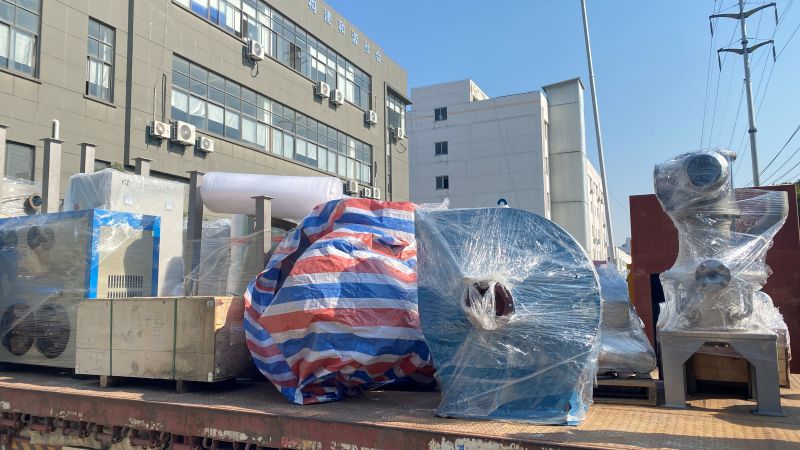This newly shipped QDF-300 wettable powder production line is designed for high-efficiency agrochemical production. Equipped with advanced air jet milling technology, it ensures uniform and ultra-fine particle sizes, meeting the demanding requirements of modern pesticide formulations.
Why do Agrochemical particles need to be ground by Air Jet Mill / Fluidized-Bed Jet Mill?
Air jet milling has become one of the most important processes in modern agrochemical production, especially for WP (Wettable Powder), WDG, SC, and other formulations. Ensuring stable fineness directly affects dispersibility, suspension rate, and the final biological efficiency. Below are the key reasons:
1. Input size requirements:
Usually, raw materials need to be in the range of 250 μm (60 mesh) to 75 μm (200 mesh) before entering the jet mill. This ensures steady feeding and consistent grinding efficiency. Some specialty materials may have unique size requirements depending on their physical properties.
2. Ultra-fine output size:
Jet mills can achieve super-fine powder from 40 to 1 micron (350–12,500 mesh). Such fineness helps improve suspension performance, enhances the uniformity of spraying, and boosts the effectiveness of agrochemical formulations.
3. Raw materials must be dry:
The drier the powders, the better the grinding performance. Moisture can cause blockages, reduce efficiency, and affect the final particle distribution.
4. No temperature rise during grinding:
As the grinding depends on high-speed airflow rather than mechanical friction, heat does not accumulate. This is crucial for temperature-sensitive ingredients such as Avermectin, Pyraclostrobin, Acetamiprid, Chlorfenapyr, Fluazinam, Propargite, and Bufenozide.
5. Low contamination with autogenous grinding:
Since the particles collide with each other instead of contacting grinding media, contamination from metal or other impurities is significantly reduced—an essential requirement for high-purity agrochemical production.
6. Easy to clean & low maintenance:
With few or no moving parts, the structure is simple. This reduces maintenance workload, shortens downtime, and makes cleaning faster—especially important when switching between different pesticide actives.
7. Precise control of particle size distribution:
Integrated classifying wheels allow stable, adjustable, and narrow particle size distribution, ensuring product consistency and better formulation performance.
Common raw materials for agrochemical jet milling include:
Sulfur powder, Mancozeb, Live Fungus, Imidacloprid, Azoxystrobin, Tebuconazole, Metalaxyl, Fosetyl Aluminum, Abamectin, Methomyl, Propineb, Fentin Acetate, Imidacloprid Fluorine Grass Amine, Thiazole Alcohol Powder, Ethiazole Alcohol, Fungicide Oxide, Pesticides, Acetamiprid, Antimicrobial agents, Carbendazim, Herbicides, Clotrimazole, Thiabendazole, Wetting Powder, and more.
Conclusion
With this QDF-300 wettable powder production line, manufacturers can efficiently process a wide range of agrochemical powders. The combination of stable input, precise air jet milling, and controlled particle size ensures consistent product quality, easy operation, and minimal contamination.
Post time: Nov-24-2025






